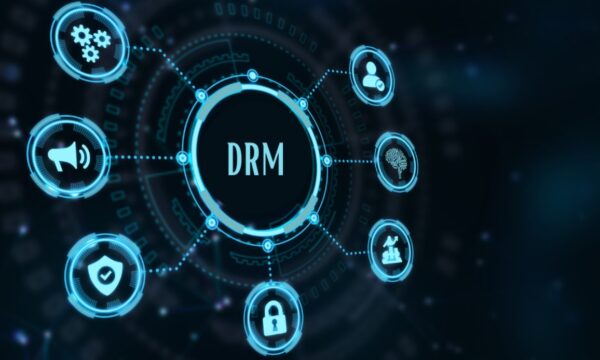In the vast realm of digital content, you might have come across the term DRM, but its intricacies and significance might still be shrouded in mystery. DRM, or Digital Rights Management, stands as a guardian of digital content, weaving a web of copyright protection for materials like eBooks, music, and software. As we delve into the world of DRM, we aim to demystify its purpose, mechanics, and the diverse perspectives surrounding its existence.
Unveiling DRM
At its core, Digital Rights Management (DRM) is a technological shield erected to safeguard digital content against unauthorized access and replication. Employing an array of techniques such as file encryption, content watermarking, and access control lists, DRM becomes the digital gatekeeper, regulating the usage of content in the vast online landscape.
The Importance
It stands as a crucial ally, empowering creators to control the usage and distribution of their content. Without it, the risk of unrestricted copying and financial losses for copyright holders looms, making it a pivotal deterrent to piracy and protector of digital content revenue streams.
Navigating the DRM Landscape: Benefits and Challenges
The Pros of DRM
- Preventing Unauthorized Copying and Distribution: It acts as a formidable barrier against illicit copying and distribution of digital content.
- Ensuring Authorized Access: It guarantees that only authorized users gain access to digital content.
- Upholding Terms and Conditions: By enforcing predefined terms and conditions, it ensures that digital content is used in compliance with the copyright holder’s stipulations.
- Protecting Revenue Streams: it becomes a shield, safeguarding the financial interests of digital content providers.
- Preventing Loss or Theft: It contributes to the security of digital content, reducing the risk of loss or theft.
The Cons and Challenges of DRM
- Restrictions on Legitimate Purchasers: DRM, when misapplied, can impede access for legitimate purchasers, leading to user frustration.
- Privacy Concerns: The tracking capabilities of DRM raise privacy concerns, as user behavior data may be used for marketing purposes without explicit consent.
- Complexity and Technical Challenges: Implementing DRM systems is often a complex and resource-intensive task, requiring substantial investment in terms of time and money.
Effectively Employing DRM
Digital Rights Management, when strategically deployed, becomes a potent tool in protecting digital content from unauthorized access and copying. Tailoring DRM to specific contexts, such as applying it to electronic books, ensures that users cannot make unauthorized copies or share content without permission.
However, the effectiveness of DRM hinges on careful considerations.
Deploying DRM successfully requires ensuring legitimate copyright, possessing the necessary rights for DRM usage, selecting a DRM solution compatible with users’ devices, and striking a balance in protection strength.
Conclusion
Digital Rights Management emerges as a crucial technological guardian, allowing businesses and individuals to shield their digital content from unauthorized use. While the realm of DRM is not without controversy, its role in preventing piracy and copyright infringement remains paramount. As we navigate the digital landscape, it stands as a sentinel, striking a delicate balance between protection and accessibility in the ever-evolving world of digital content.
